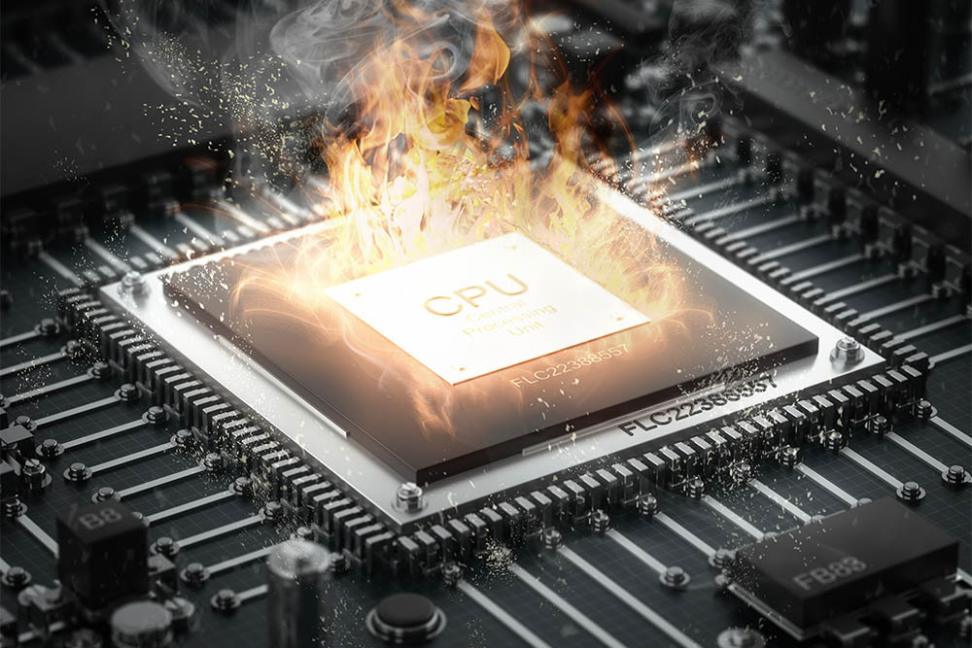Keeping your computer cool is crucial for optimal performance and longevity. But how hot is too hot for your CPU, the brain of your machine? Understanding safe temperature zones is essential to prevent overheating and potential damage. This article delves into the world of CPU temperatures, comparing Intel and AMD processors and their recommended safe zones.
Understanding CPU Temperature


Before diving into specifics, let’s establish some basics. A CPU (Central Processing Unit) generates heat during operation. This heat needs to be dissipated efficiently to prevent overheating, which can lead to throttling (performance reduction), system instability, and even permanent damage.
Measuring CPU Temperature
Several tools and methods can help you monitor your CPU temperature. Most operating systems come with built-in monitoring tools, and many motherboard manufacturers offer their own software. Additionally, third-party applications like Core Temp and HWMonitor provide detailed temperature readings.
Factors Affecting CPU Temperature
Several factors influence your CPU’s temperature:


- Workload: More demanding tasks like gaming, video editing, and scientific computing generate more heat.
- Ambient Temperature: A hotter room temperature translates to a hotter CPU.
- Cooling System: The effectiveness of your CPU cooler (air cooler or liquid cooling) significantly impacts temperature.
- Thermal Paste: This interface material between the CPU and cooler plays a vital role in heat transfer.
Safe Zones: Intel vs AMD


Now, let’s get to the heart of the matter: safe temperature zones for Intel and AMD processors. It’s important to remember that these are guidelines, and individual CPU models may have slightly different specifications. Always refer to your specific processor’s documentation for the most accurate information.
Intel Processors:
- Idle: Intel typically recommends idle temperatures below 40°C (104°F).
- Moderate Load: Under moderate workloads, temperatures between 40°C and 60°C (104°F and 140°F) are generally considered safe.
- Heavy Load: During heavy workloads or overclocking, temperatures up to 80°C (176°F) are usually acceptable, but exceeding this for extended periods is not recommended.
- Tj Max: Each Intel CPU has a Tj Max (maximum junction temperature), which is the absolute maximum temperature the CPU can safely reach without sustaining damage. This value typically ranges from 95°C to 105°C (203°F to 221°F). Exceeding Tj Max can lead to permanent damage.
AMD Processors:
- Idle: AMD recommends idle temperatures below 40°C (104°F).
- Moderate Load: Similar to Intel, temperatures between 40°C and 60°C (104°F and 140°F) are generally considered safe under moderate loads.
- Heavy Load: During heavy workloads or overclocking, temperatures up to 90°C (194°F) are typically acceptable, but exceeding this for extended periods is not recommended.
- TDP (Thermal Design Power): AMD uses TDP to specify the amount of heat a processor is designed to dissipate. Processors with higher TDPs can handle higher temperatures. For example, a processor with a TDP of 65W is designed to handle up to 65W of heat, while a processor with a TDP of 105W can handle up to 105W.
Additional Considerations:
- Cooler Quality: A high-quality cooler can significantly lower your CPU temperature.
- Thermal Paste: Ensure proper application of thermal paste for optimal heat transfer.
- Case Airflow: Good airflow within your PC case is crucial for heat dissipation.
- Monitoring and Maintenance: Regularly monitor your CPU temperature and clean your PC from dust buildup.
Warning Signs of Overheating:
- Random shutdowns or restarts
- Reduced performance
- Blue screen errors
- Fan noise increase
If you experience any of these signs, take immediate action to cool down your CPU. Shut down your computer, check for proper airflow, and ensure your cooler is functioning correctly. Consider applying new thermal paste if necessary.
Conclusion:
Understanding safe CPU temperature zones is crucial for preventing overheating and ensuring the longevity of your processor. While Intel and AMD have slightly different guidelines, both recommend keeping temperatures below 80°C (176°F) for extended periods and avoiding exceeding the Tj Max or TDP limits. Regularly monitoring your CPU temperature and maintaining a cool, well-ventilated PC environment are key to keeping your system running smoothly. Remember, prevention is always better than cure!
Read Also:


